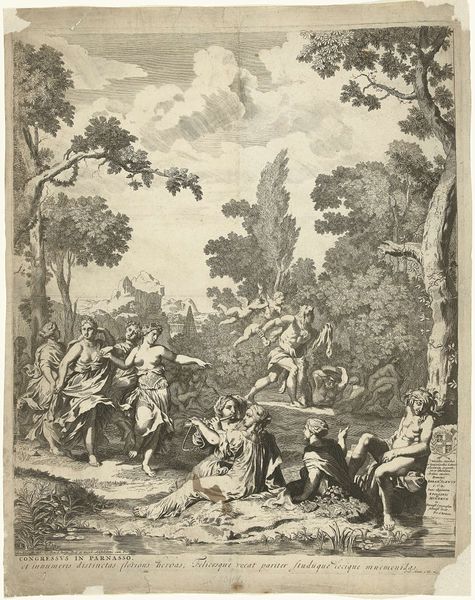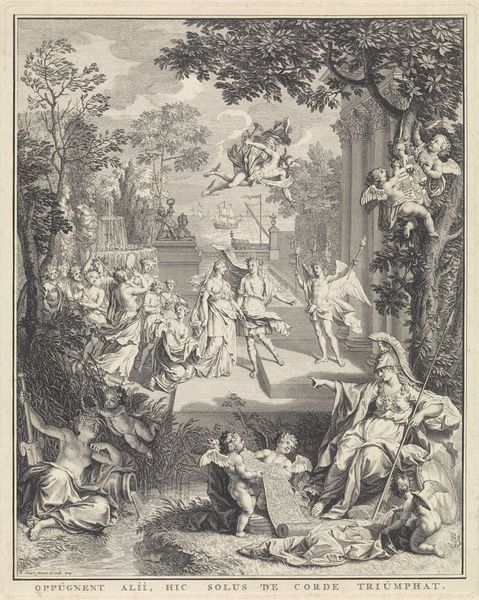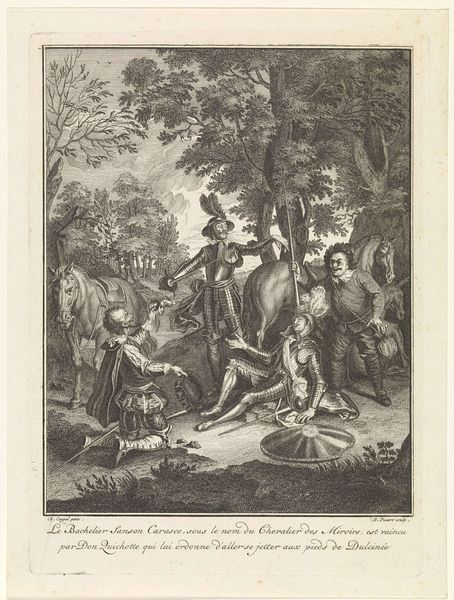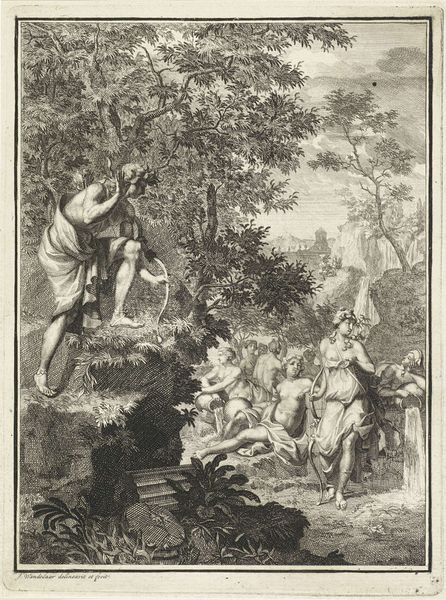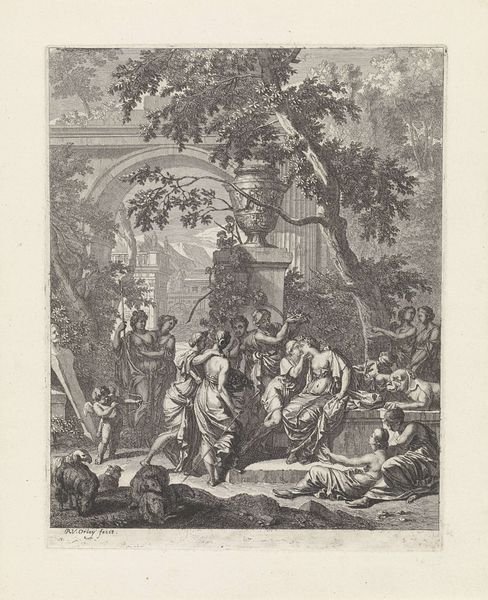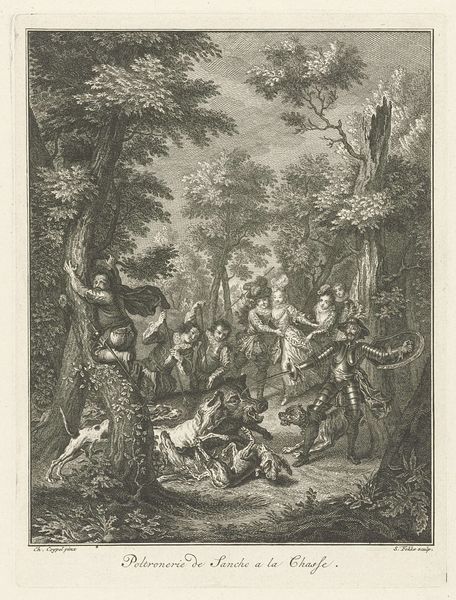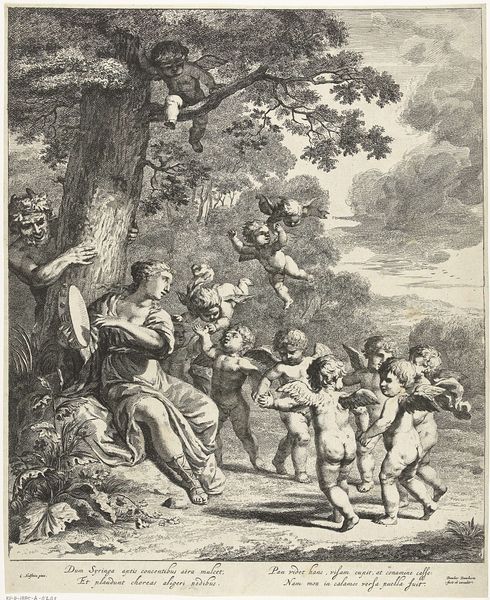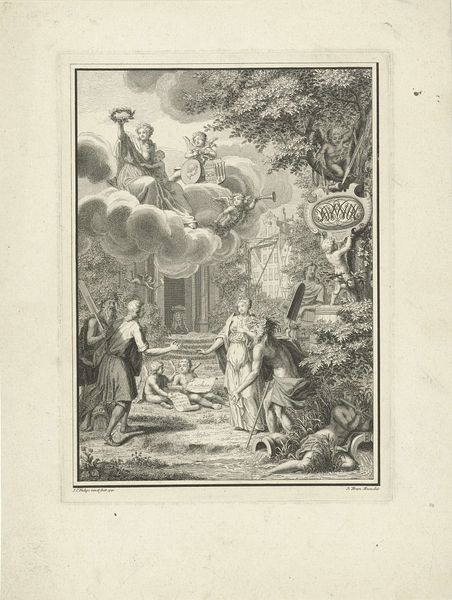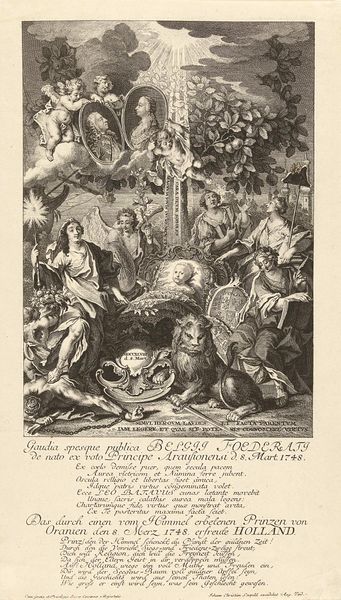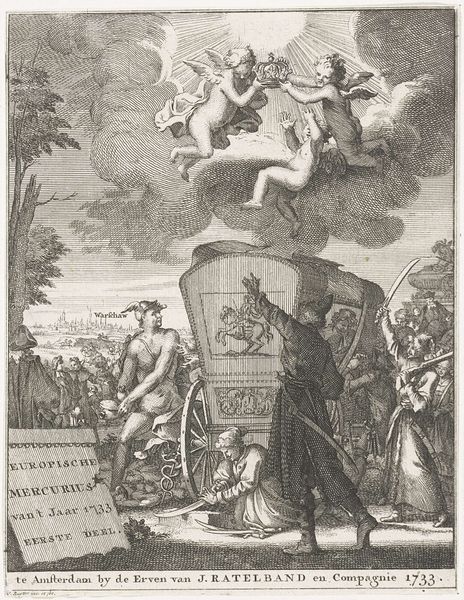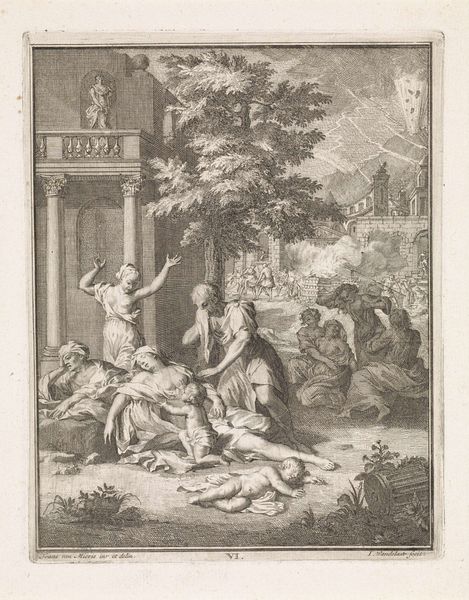
Minerva bezoekt Apollo en de muzen op de Parnassus, linker deel before 1737
0:00
0:00
print, engraving
#
allegory
#
baroque
#
mechanical pen drawing
# print
#
pen illustration
#
pen sketch
#
landscape
#
figuration
#
ink drawing experimentation
#
line
#
pen work
#
history-painting
#
engraving
Dimensions: height 585 mm, width 480 mm
Copyright: Rijks Museum: Open Domain
Curator: This is an engraving by Pieter van den Berge entitled "Minerva bezoekt Apollo en de muzen op de Parnassus, linker deel," placing us before 1737. What strikes you about this work? Editor: It's dreamlike, almost overwhelming. All these figures tumbling over each other, under watchful goddesses in the clouds. There’s an incredible sense of depth, even though it’s monochrome. The whole scene feels quite theatrical. Curator: It does have a stage-like quality. The composition leads the eye upward from the lounging figures at the bottom, through the gathering of Muses, to Apollo with his lyre, and finally to Minerva presiding from on high. Given the setting on Mount Parnassus, the home of Apollo and the Muses, we can interpret this as an allegory of the arts. What can you say about the two goddesses in particular? Editor: The imagery is rich. We see Minerva, the goddess of wisdom and strategic warfare, in her helmet and shield, gesturing command. The juxtaposition with Apollo, god of music, poetry, and light, is key. Minerva's presence could represent the intellectual framework behind artistic inspiration, that reason and intellect bolster Apollo’s inspiration. Curator: Indeed. Minerva’s inclusion speaks to the important place art occupied in Dutch society. By representing the deities, we see not just inspiration, but the very intellectual justification for the flourishing arts scene as tied to ideas of knowledge, governance and cultural identity. Remember that patronage often came from those who sought to associate themselves with wisdom and refinement. Editor: That connection resonates. You also sense how visual arts carried significant cultural weight; to have such scenes printed and distributed implies a broader social interest and awareness, with art serving not only decorative purposes but communicating specific social messages about power and legacy. It seems Van den Berge aimed to project this artistic world, influenced by and reflecting societal and governmental values. Curator: Exactly, that artistic world of that era—linked so closely with power and the elite—sought to cultivate both appreciation for the arts and understanding of its social implications. Editor: Examining the work's symbolism highlights a complex relationship of divinity, intellect, and social standing within the arts, while from my view, it seems art holds a mirror to the cultural aspirations of an era— and even for us to this day.
Comments
No comments
Be the first to comment and join the conversation on the ultimate creative platform.
